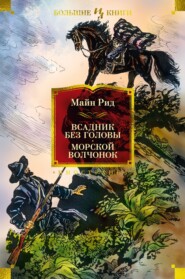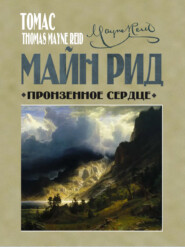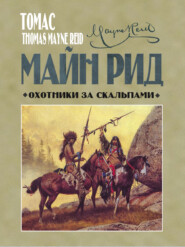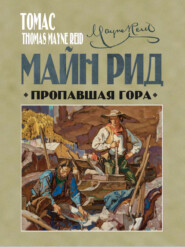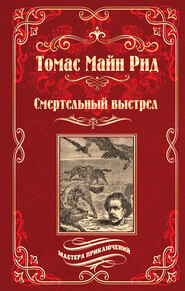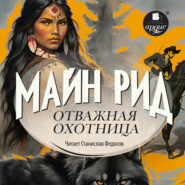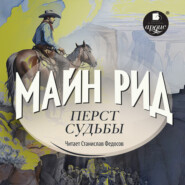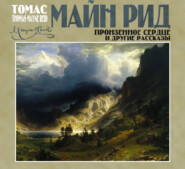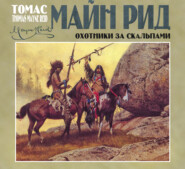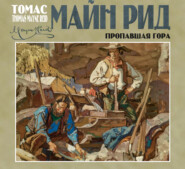По всем вопросам обращайтесь на: info@litportal.ru
(©) 2003-2025.
✖
The Boy Hunters
Настройки чтения
Размер шрифта
Высота строк
Поля
“The red mulberry, like the white and black species, runs into several varieties, differing considerably from each other.
“There is still a fourth species of this genus, called the paper mulberry (Morus papyrifera). This, however, has been separated by botanists into another genus; but it is worth a word here, as it is a very curious and valuable tree, or, rather, a large shrub, for it does not grow so tall as either of the other three. It is a native of China, Japan, and the islands of the Pacific Ocean; but, like the others, it is cultivated for ornament both in Europe and America. Its fruit, which is of a scarlet colour, is globe-shaped, and not oblong, as that of the true mulberries; and this is one reason why it has been separated into a genus by itself. Its leaves are of no use for silk-making, but they make excellent food for cattle; and as the tree grows rapidly, and carries such large bunches of leaves, some people have said that it would yield better than grass, and should be cultivated for pasture. I do not know whether this has been tried yet. The most interesting part of the paper mulberry is its bark, which is used in the manufacture of paper both in China and Japan. The beautiful India paper used for engravings is made from it, and so, too, is the fine white cloth worn by the natives of the Society Islands, and which so much astonished Europeans when they first saw it. It would be interesting to detail the process of manufacturing this cloth as well as the paper, but it would take up too much of our time at present.
“There is another genus of trees which resembles the mulberries very much. They are valuable for their wood, which produces a fine yellow dye, known by the name of ‘fustic-wood.’ The tree that produces the best of this dye is the Morus tinctoria, and grows in the West Indies and tropical America; but there is a species found in the southern United States, of an inferior kind, which produces the ‘bastard fustic’ of commerce.
“So much, then, for the mulberry-tree; but I fear, brothers, I have left but little time to describe the others.”
“Oh! plenty of time,” said Basil; “we have nothing else to do. We are better learning from you than rambling idly about; and upon my word, Luce, you make me begin to take an interest in botany.”
“Well, I am glad of that,” rejoined Lucien, “for I hold it to be a science productive of much good, not only on account of its utility in the arts and manufactures, but to the mind of the student himself; for, in my belief, it has a refining influence.”
And Lucien was about to continue his description of the trees, when a series of incidents occurred which put an end to the conversation, at least upon that subject.
These incidents are recorded in the chapter which follows.
Chapter Eleven.
The Chain of Destruction
Directly in front of the tent, and at no great distance from it, a thick network of vines stretched between two trees. These trees were large tupelos, and the vines, clinging from trunk to trunk and to one another, formed an impenetrable screen with their dark green leaves. Over the leaves grew flowers, so thickly as almost to hide them – the whole surface shining as if a bright carpet had been spread from tree to tree and hung down between them. The flowers were of different colours. Some were white and starlike, but the greater number were the large scarlet cups of the trumpet-vine (bignonia).
François, although listening to his brother, had for some time kept his eyes in that direction, as if admiring the flowers. All at once, interrupting the conversation, he exclaimed, —
“Voilà! look yonder – humming-birds!”
Now the sight of humming-birds is not so common in America as travellers would have you believe. Even in Mexico, where the species are numerous, you will not see them every day. Indeed, you may not notice them at all, unless you are specially looking for them. They are such small creatures, and fly so nimbly – darting from flower to flower and tree to tree – that you may pass along without observing them, or perhaps mistake them for bees. In the United States, however, where only one species has yet been noticed, the sight is a rare one, and generally interesting to those who witness it. Hence François’ exclamation was one of surprise and pleasure.
“Where are they?” inquired Lucien, starting up in an interested manner.
“Yonder,” replied François, “by the trumpet flowers. I see several, I think.”
“Softly, brothers,” said Lucien; “approach them gently, so as not to fright them off – I wish to make some observations upon them.”
As Lucien said this, he walked cautiously forward, followed by Basil and François.
“Ah!” exclaimed Lucien, as they drew near, “I see one now. It is the ruby-throat (Trochilus colubris). He is feeding on the bignonias. They are fonder of them than any other blossoms. See! he has gone up into the funnel of the flower. Ha! he is out again. Listen to his whirring wings, like the hum of a great bee. It is from that he takes his name of ‘humming-bird.’ See his throat, how it glitters – just like a ruby!”
“Another!” cried François; “look above! It is not near so pretty as the first. Is it a different species?”
“No,” replied Lucien, “it is the female of the same; but its colour is not so bright, and you may notice that it wants the ruby-throat.”
“I see no others,” said François, after a pause.
“I think there are but the two,” remarked Lucien, “a male and female. It is their breeding season. No doubt their nest is near.”
“Shall we try to catch them?” inquired François.
“That we could not do, unless we had a net.”
“I can shoot them with small shot.”
“No, no,” said Lucien, “the smallest would tear them to pieces. They are sometimes shot with poppy-seeds, and sometimes with water. But never mind, I would rather observe them a bit as they are. I want to satisfy myself upon a point. You may look for the nest, as you have good eyes. You will find it near – in some naked fork, but not among the twigs or leaves.”
Basil and François set about looking for the nest, while Lucien continued to watch the evolutions of the tiny little creatures. The “point” upon which our young naturalist wished to be satisfied was, whether the humming-birds eat insects as well as honey – a point which has been debated among ornithologists.
As he stood watching them a large humble-bee (Apis bombylicus) came whizzing along, and settled in one of the flowers. Its feet had scarcely touched the bright petals, when the male ruby-throat darted towards it, and attacked it like a little fury. Both came out of the flower together, carrying on their miniature battle as they flew; but, after a short contest, the bee turned tail, and flew off with an angry-like buzz, – no doubt, occasioned by the plying of his wings more rapidly in flight.
A shout from François now told that the nest was discovered. There it was, in the fork of a low branch, but without eggs as yet – else the birds would not both have been abroad. The nest was examined by all three, though they did not disturb it from its position. It was built of fine threads of Spanish moss (Tillandsia), with which it was tied to the branch; and it was lined inside with the silken down of the anemone. It was a semi-sphere, open at the top, and but one inch in diameter. In fact, so small was the whole structure, that any one but the sharp-eyed, bird-catching, nest-seeking François, would have taken it for a knob on the bark of the tree.
All three now returned to watch the manoeuvres of the birds, that, not having seen them by the nest, still continued playing among the flowers. The boys stole as near as possible, keeping behind a large bunch of hanging vines. Lucien was nearest, and his face was within a few feet of the little creatures, so that he could observe every motion they made. He was soon gratified with a sight that determined his “point” for him. A swarm of small blue-winged flies attracted his attention. They were among the blossoms, sometimes resting upon them, and sometimes flitting about from one to another. He saw the birds several times dash at them with open bills, and pick them from their perch; so the question was decided – the humming-birds were insect-eaters.
After a while the female flew off to her nest, leaving the male still among the flowers.
The curiosity of the boys was now satisfied, and they were about to return to the tent, when Lucien suddenly made a motion, whispering the others to remain silent. François first caught sight of the object which had caused this behaviour on the part of his brother, and then Basil saw it. A hideous object it was!
Crouching among the leaves, now crawling sideways, now making short springs, and then hiding itself, went a fearful-looking creature. It was about the size of one of the birds, but far different in appearance. Its body consisted of two pieces, joined about the middle, and covered all over with a reddish-brown wool or hair, that stood upright like bristles. It had ten limbs – long, crooked, and covered with hair, like the body – two curved claw-like antennae or feelers in front, and two horns projecting behind, so that, but for the sharp fiery eyes of the creature, it would have been difficult to tell its head from its hinder part. Its rusty colour, its ill-shaped body, and hairy legs, combined with the piercing look from its eyes, gave it a most vicious appearance, such as belongs, less or more, to all of its race – for it was of the race aranea, or spiders.
“The leaping tarantula!” whispered Lucien to his brothers. “See,” he continued, “it is after the ruby-throat!”
This was evident. Step by step, and leap after leap, it was approaching the cluster of blossoms where the humming-bird was at the moment engaged. Its eyes were bent eagerly upon the latter; and whenever it flew up from the flowers and whirred idly about, the tarantula squatted itself closely, hiding behind the leaves or shanks of the vines. On the other hand, when the bird settled a moment and appeared busily feeding, the skulking creature would advance a stage nearer, either by a quick run or a leap, when it would again conceal itself and await a fresh opportunity. As the bird flitted about a good deal, the spider had frequently to change its direction in following. The former after one of its short flights, settled into a pet-flower directly in front of where the latter lay crouching. It did not enter the cup of the flower, but remained at the mouth – poised upon its whirring wings – while with its long prehensile tongue it drew out the honey. It had scarcely been a moment in this position, when the tarantula sprang forward and clutched it round the body with his antennae. The bird, with a wild chirrup, like that of a distressed cricket, flew outward and upwards. Its wings were still free, and all expected it would carry off the spider that was now seen clinging around it. Not so, however. On getting a few feet from the flower its flight appeared to be suddenly checked; and, although it still kept in the air, flying first one way and then another, it was evident that something restrained it from getting clear off. On looking more attentively a fine silk-like line was seen stretching from the trees to the fluttering creature. It was the thread of the spider, and this it was that prevented his victim from carrying him into the air.
The little wings soon ceased to move, and both bird and spider fell to the end of the thread, where they hung for a moment suspended. The boys could see that the bird was dead, and the mandibles of the tarantula were buried in its shining threat!
François would have rushed forward to kill the destroyer; but Lucien, who was too ardent a naturalist to have his lesson thus interrupted, restrained his more impetuous brother, and all three remained quiet as before.
The tarantula now commenced reeling in his line, for the purpose of carrying his prey up among the branches, where he had his nest. The boys looked upward to discover the latter. There, sure enough, was the web, in a shaded corner, stretching its meshes from a large liana to the trunk of the tupelo; and towards this point the spider now slowly progressed with his lifeless victim.
As they watched his motions, their eyes were caught by a shining object that moved along the wrinkled bark of the liana. As the vine was nearly a foot in diameter, and of a deep ferruginous colour, this object was the more apparent against its dark ground, for it was a creature of brilliant hues. It was an animal of the lizard species; and if any lizard could be considered beautiful, this one might have been so called. But the hideous, half-human form of these animals, their piercing looks, their stealthy and predatory habits, and, above all, the knowledge that the bite of several of their species is poisonous, combine to render them objects that excite disgust and awe, rather than admiration.
This one, as we have already said, was of the most brilliant colour. The whole of its upper surface was a golden green, vivid as the hues of an emerald; while its body underneath was greenish-white. But this part, as it lay along the liana, was not seen; and a pure, uniform green was the apparent colour of the whole animal. There was one conspicuous exception – the throat. This was swollen out, as though by inflation, exhibiting a surface of the brightest scarlet, that appeared in the sun as if painted with vermilion. The eyes of the animal shone like flame – for the irides were, in fact, the colour of burnished gold, with small pupils, sparkling like diamonds, in their midst. Its arms and limbs were of the same colour as the body; and its branching feet exhibited the peculiarity of having small knots or tubercules at the ends of the toes. These tubercules, together with the loose dewlap of the throat, told the genus to which the animal belonged, – an anolius of the family Iguanidae, and the only species of the anolius found in the territory of the United States.
These facts were communicated by Lucien to his brothers in a whisper, while they were observing the creature on the liana. Basil and François had often seen the species before, and were familiar with it under the names of “green lizard” and “chameleon,” – both of which names are applied to it in common phraseology. The animal was not over six inches in length; and its long coffin-shaped head, and slender, whip-like tail, were at least two-thirds of this extent. When first noticed, it was passing up the liana, for the latter slanted upwards between the trees. It did not see the boys; or, at all events, did not regard their presence – for the chameleon is a bold little animal, and is not afraid of man. Up to this time it had not seen the tarantula either. As it was passing onward, its eyes fell upon the latter as he climbed up his silken ladder. All at once the lizard stopped, and put itself into a crouching attitude. Its colour suddenly changed. The vermilion throat became white, and then ashy pale; and the bright green of its body faded into dark brown or rust colour, until it was difficult to distinguish the animal from the bark of the liana! Had the eyes of the spectators not been already fixed upon it, they might have supposed that it had disappeared altogether. After crouching for a few seconds, it seemed to have formed its plan of attack – for it was evident that it meant to attack the spider – such, with flies and other insects, being its natural food and prey. It passed to the opposite side of the liana, and then proceeded upward, making for the nest of the tarantula. It reached this point by a single run, although its back was downward as it crawled. This it could easily do by means of the tubercules upon its toes – which enable lizards of the genus anolius to walk upon perpendicular walls, up glass windows, or along the smoothest ceilings.
For some moments it lay quiet in a crouching attitude, waiting the approach of the spider, that, busied with his own affairs, did not dream of a lurking foe so near him. The tarantula was, no doubt, in high spirits at the moment, exulting at the prospect of the banquet of blood he should have, when he had carried the ruby-throat to his dark, silken cave. But he was destined never to reach that cave. When he had got within a few inches of its entrance, the chameleon sprang out from the limb, seized the spider in his wide jaws, and all three – lizard, spider, and bird – came to the ground together. The bird was let go in the fall, and became separated from the others. Between these there was a short struggle over the grass – for the tarantula fought fiercely; but he was no match for his antagonist; who, in a few moments, had ground off his legs with his powerful jaws, and left him a helpless and motionless trunk. The chameleon now seized his victim by the head, sunk his sharp, conical teeth into its skull, and thus killed it outright.
What appeared singular to all was, that the moment the lizard had first sprung upon his prey his bright colours returned like a flash, and he again appeared with his green back and red throat, if possible more brilliant than ever.
He now commenced dragging the body of the spider over the grass, evidently making for some decayed logs, half covered with vines and briars, that formed a heap near the spot. Here, no doubt was his retreat.
This time François did not attempt to interfere. He had no desire to do so. He looked upon the death of the tarantula as a just punishment; moreover, the chameleon, from its fine colours, its sportive habits, and its harmlessness – so far as man is concerned – is a general favourite with all; and it was so with François. In fact, François, as well as his brothers, who had often watched this little creature gambolling among the leaves, and feeding upon flies and other small insects, had never seen it exhibit so much ferocity before. Notwithstanding this, they all applauded it for killing the hideous tarantula; and so far as they were concerned, it might have carried the body to its hole without being molested. It was destined, however, to meet with interruption from another quarter. François, whose quick eyes were wandering about, suddenly exclaimed, —
“Look – brothers, look! A scorpion-lizard!”
Basil and Lucien cast their eyes where François pointed – up to the trunk of a tree that rose over the spot where the chameleon was crawling. About twenty feet from the ground was a dark, round hole, evidently the former nest of the red-bellied woodpecker (Picus Carolinus). The birds, however, who made that nest had deserted it; for it was now occupied by a creature of a far different kind – a scorpion-lizard – whose red head and brown shoulders at the moment protruded from the hole.
All who have travelled the great American forests are familiar with such a sight – for this animal may be often observed in similar situations. A more disagreeable sight is rarely met with. The scorpion-lizard, with his red head and olive-brown body, is a hideous-looking reptile at best; but when thus peering from his gloomy tree-cave, moving his pointed snout from side to side, his dark eyes glancing all the while with a fierce, malignant expression, it is difficult to conceive a more vicious-looking creature.
His head was in motion when François spake – for it was this that had caught the eye of the boy. It was moving from side to side, protruded out from the hole, the snout pointing downwards. The animal was watching the ground below, and evidently preparing to issue forth, and come down. The chameleon, rustling over the dead leaves, had attracted his attention.






